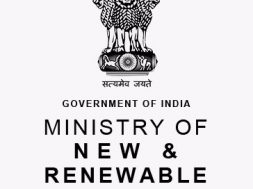
In Short : India is leading a green revolution by rapidly adopting renewable energy sources like solar, wind, and hydropower. Aiming for 500 GW of renewable energy by 2030, the country is reducing its carbon footprint and ensuring energy security. Government initiatives and private sector investments are driving this transition, creating jobs, boosting the economy, and promoting a sustainable future.
In Detail : As the global energy landscape undergoes a transformative shift, renewable energy emerges as a critical component in securing a sustainable and resilient future for India. By diversifying its energy mix and reducing reliance on fossil fuels, India can achieve greater energy independence and contribute to global efforts to combat climate change. Below, we explore the major renewable energy sources driving this transition and the benefits they offer in strengthening energy security.
Solar Energy: Harnessing the Power of the Sun
Solar energy is the most abundant and adaptable renewable resource, offering vast potential for electricity generation, heating, and cooling. India’s solar power industry has seen rapid expansion, with an installed capacity of 66.78 GWAC as of March 31, 2023. This places India fourth in the world in terms of solar energy capacity. Initiatives like the International Solar Alliance and the development of solar parks reflect India’s strategic focus on leveraging solar energy for long-term energy security. The widespread adoption of solar technology, including rooftop solar systems, further democratizes energy access across urban and rural areas.
Wind Energy: Capturing the Winds of Change
Wind energy, harnessed through large turbines on land and at sea, offers significant potential for electricity generation. In fiscal year 2022–23, wind power contributed nearly 10% to India’s total installed utility power capacity. With considerable untapped potential, especially in offshore regions, wind energy presents opportunities for diversifying India’s energy portfolio. The expansion of wind farms can reduce reliance on imported fuels and enhance the stability of the national grid, particularly in regions with high wind potential.
Geothermal Energy: Tapping the Earth’s Heat
Geothermal energy, which draws on heat from beneath the Earth’s surface, is a promising, yet underexplored, source of renewable energy in India. The country has identified several potential sites for geothermal development, and plans are underway for its first geothermal power plant in Ladakh. Unlike solar and wind energy, geothermal energy is not weather-dependent, making it a reliable source of baseload power. Developing this resource can enhance energy security by providing a consistent and sustainable energy supply, reducing the need for conventional fossil fuels.
Hydropower: Leveraging Water Resources for Energy
Hydropower, generated from the movement of water, plays a crucial role in India’s energy strategy, contributing over 12% to the nation’s total utility power production capacity. Beyond electricity generation, hydropower projects offer additional benefits, including water storage, irrigation, flood control, and navigation. The expansion of small and large hydropower facilities can address both energy and water resource management challenges, particularly in regions prone to droughts or floods.
Bioenergy: Converting Biomass into Power
Bioenergy, derived from organic materials such as agricultural residues, forest products, and waste, is a versatile renewable energy source that can be used for heat, power, and biofuel production. India’s abundant biomass resources support a significant portion of the country’s energy needs, particularly in rural areas. Investing in advanced bioenergy technologies not only enhances energy security but also contributes to rural development by creating jobs and reducing waste. Bioenergy projects can play a key role in building a circular economy, where waste is transformed into valuable energy.
Key Benefits of Transitioning to Renewable Energy
Transitioning to renewable energy sources offers several strategic benefits that are vital to India’s energy future:
Reducing Greenhouse Gas Emissions: By shifting to clean energy sources such as solar, wind, and bioenergy, India can significantly reduce its greenhouse gas emissions, contributing to global climate goals and improving air quality.
Enhancing Energy Independence: Renewable energy reduces dependence on imported fuels, making India less vulnerable to global energy price fluctuations and supply disruptions. By tapping into its abundant natural resources, India can achieve greater energy self-sufficiency.
Expanding Energy Access: Renewable energy technologies can bring electricity to underserved and remote areas, improving quality of life and supporting economic development. Off-grid solar systems and community-based bioenergy projects are particularly effective in providing energy to rural populations.
Creating Jobs and Supporting Economic Growth: The growth of the renewable energy sector stimulates job creation in manufacturing, installation, and maintenance, contributing to economic development. Solar and wind energy projects, in particular, have generated numerous employment opportunities across the country.
Fostering Rural Development: Renewable energy projects in rural areas can enhance agricultural productivity, provide clean cooking solutions, and improve access to education and healthcare, fostering overall rural development.
A Collaborative Path to a Sustainable Future The transition to renewable energy is not just an environmental imperative but also a strategic necessity for India’s energy security. By continuing to invest in and develop renewable energy sources, India can build a more resilient energy system that meets the needs of its growing population while mitigating the impacts of climate change. Achieving this goal requires collaboration among governments, businesses, and communities to accelerate the adoption of clean energy technologies. Together, we can ensure a sustainable and prosperous future for all.













